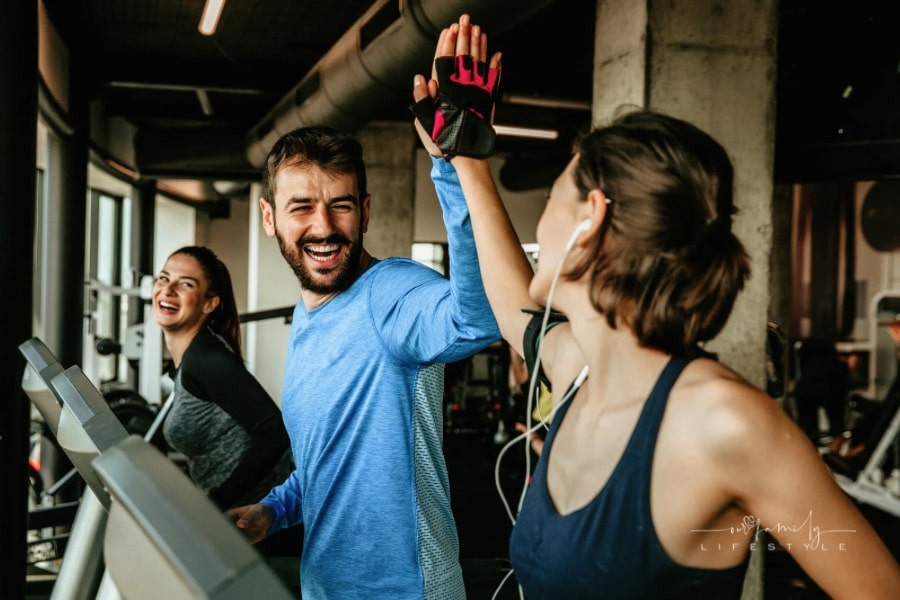Professional Tips To Follow When Going To The Gym
Embarking on a fitness journey requires motivation and knowledge about effective workout strategies.
Unfortunately, most people go to the gym unprepared, risking their health and not getting the most out of their workout experiences.
Whether you’re a seasoned gym-goer or a beginner stepping into a gym for the first time, understanding the fundamental principles of effective training can significantly enhance your progress.

Tips For The Gym
This guide provides an overview of key tips and techniques curated by professionals to help you optimize your gym workouts.
1. Choose The Right Workout
Choosing the right workout routine is essential for reaching fitness goals and maintaining overall health.
It’s not a one-size-fits-all situation; the ideal workout depends on factors like body type, fitness level, and health conditions.
Staying informed about muscle and health news can keep you updated on the latest workout trends and scientific findings, offering expert advice tailored to your needs.
Depending on your lifestyle, you may benefit from classical strength training, HIIT (High-Intensity Interval Training), or a mix of both.
Recent studies indicate combining strength training and cardio exercises maximizes muscle growth and cardiovascular health.
Aim to include components of both types of exercise in your routine where possible.
The best approach is to work out for at least 30 minutes three times a week, gradually increasing the intensity and frequency as you progress.
2. Warm Up Properly
The primary objective of a warm-up is to gradually raise your body temperature, promoting muscle elasticity and minimizing the risk of injury.
Additionally, it enhances blood circulation, ensuring ample oxygen and nutrient supply to your muscles. Incorporating a proper warm-up routine can optimize your performance and safeguard your body during exercise.
A good warm-up should last around 10-15 minutes and include light cardio exercises like jogging or cycling and dynamic stretches targeting the muscles used in your workout.
Remember, a proper warm-up sets the stage for an effective and safe workout, so take advantage of this vital step.
3. Maintain Good Form
To have effective and safe workout sessions, maintain good form during exercises.
Don’t compromise form when lifting weights to reduce the risk of injuries.
Check your posture in the mirror before starting any exercise to engage the right muscles correctly.
Poor form, on the other hand, can put undue stress on your joints, leading to strains, sprains, and other injuries.
If you need clarification on your form, ask a trainer for help.
Besides, take advantage of mirrors in the gym to monitor your form during exercises.
Remember, it’s not about the number of reps but the quality of each rep that counts towards your fitness progress.
4. Fuel Your Body Right
Optimal nutrition plays a key role in enhancing your workout performance and recovery.
Fueling your body with the right nutrients before and after your workout sessions is essential.
Before exercising, consume a balanced meal with a good mix of carbohydrates and protein.
Carbohydrates provide the energy needed for your workout, while protein helps repair and grow muscle.
After your workout, it’s vital to replenish glycogen stores and provide muscles with the necessary protein for recovery.
Consuming a protein and carbohydrate-rich meal or snack within 30 minutes to an hour post-workout can help achieve this.
Staying hydrated throughout your workout is equally important to replace lost fluids.
Proper nutrition is as crucial as your workout routine in your fitness journey.
5. Focus on Progressive Overload
Progressive overload means gradually increasing workout difficulty over time.
To see results, continuously challenge your body.
If stuck in a plateau, advance weights and reps or try more challenging variations.
Always practice progressive overload safely and gradually.
Besides building muscle strength, progressive overload keeps you motivated and engaged in workouts.
Push yourself further each time you hit the gym to acknowledge even small progress.
Remember to take breaks after intense sessions to allow your body to rest and recover.
6. Listen To Your Body
Listening to your body when exercising is essential as it will tell you what it needs occasionally.
For instance, if you’re feeling fatigued, it’s okay to take a few moments and slow down your pace.
Similarly, if you feel any sudden pain or discomfort during an exercise, stop immediately and consider asking for help from a trainer.
It’s important to remember that there is no one-size-fits-all approach to fitness and wellness goals.
Feel free to step back and reassess your routine if something feels wrong.
Additionally, suppose you’re new to the gym or starting with a workout plan.
In that case, it’s always wise to begin low-intensity exercises and gradually increase the difficulty as your body adapts.
Doing so can help you get fitter and stronger safely and prevent injuries.
Going to the gym is an excellent way to stay fit, healthy, and happy.
However, it’s essential to maintain good form and practice proper gym etiquette to get the most out of your workouts.
Always listen to your body and never force yourself beyond your limits.
By following these simple tips, you can ensure that every gym visit is a safe and enjoyable experience.


